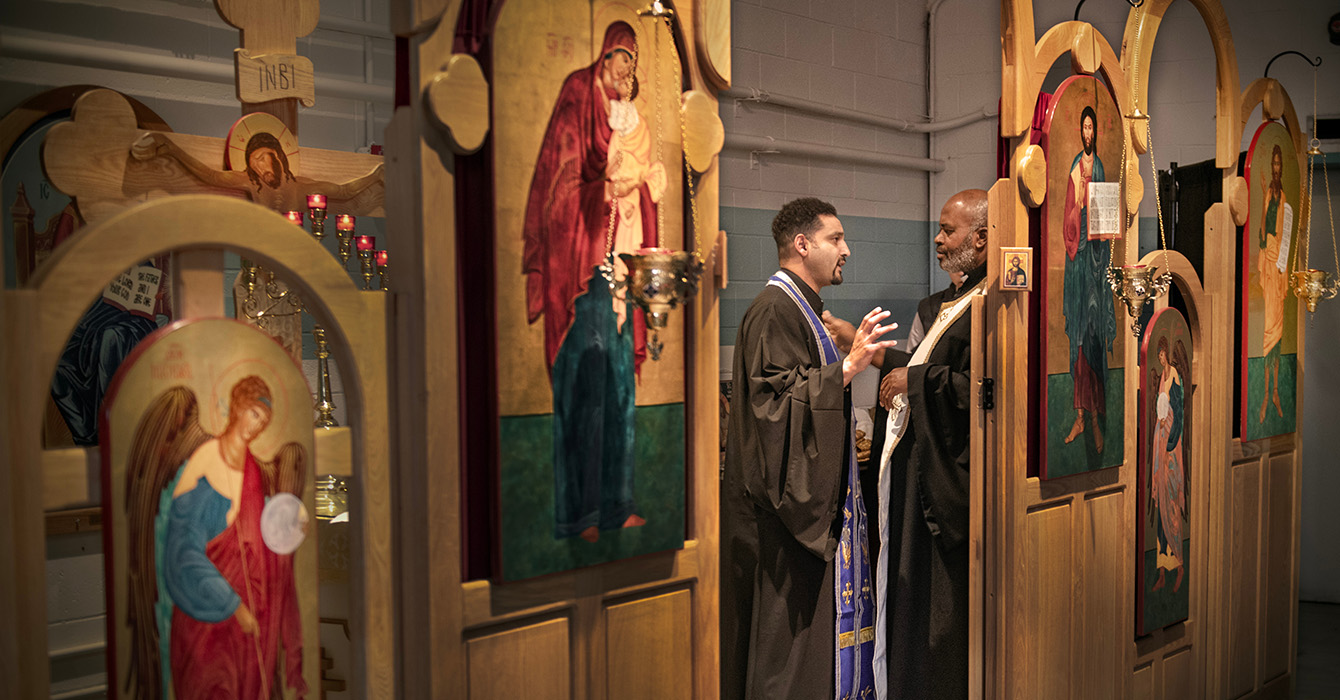Editor’s note: In “Speaking Faithfully: Communications as Evangelism in a Noisy World,” Jim Naughton and Rebecca Wilson, partners in Canticle Communications , offer churches and other Christian organizations much-needed advice on public relations, social media and other techniques to raise visibility. In the following excerpt, they list 10 tips on how to get media coverage.
Every now and then we hear people in the church say something like this: “The media only pay attention to the sensational stuff. They love conflict. They never focus on all of the good things we do.” To which we have four replies:
1. The church is frequently in conflict -- it has been since Paul faced down Peter at the Council of Jerusalem -- and its conflict over important social issues is significant to the wider society. The media’s attention is evidence that the church still matters. Be glad for it.
2. There isn’t a designated mainline Protestant slot in the paper that would be filled by a story about your food pantry if arguments about sexual morality were suddenly resolved.
3. Sometimes the church does something egregious and needs to be held accountable just like any other institution. Because people rightly hold the church to a higher standard than other institutions, there is a deeper sense of discontinuity when church folk go wrong, and that increases the news value of the story. Call it the hypocrisy factor.
4. If the media isn’t telling the stories you want told it is possible (we say very gently) that those stories aren’t interesting or significant enough to warrant coverage. Or, it is possible that you are not presenting them to the media in a way that catches their attention. Or perhaps you have not presented stories to the media at all.
It isn’t easy to get your congregation, diocese, conference, or other sort of Christian organization into the newspaper or in online media outlets unless something has gone significantly wrong. It is even harder to get it on television or the radio. But it is possible if you absorb these 10 simple tips.
Tip 1: Know what’s free.
Many newspapers have free listings. Many websites have free calendars. Submitting brief descriptions of your items to these lists takes very little time, and editors sometimes troll the listings to select featured items.
Tip 2: Know what kinds of stories a particular media outlet runs, and pitch them accordingly.
Does it do all news, good and bad? Does it feature fun things? Does it focus on big issues and illustrate them using local examples? Or is it a local paper that writes about community news and events and will often take your photograph and cutline -- or even your well-crafted press release -- and print it verbatim? The best and most effective way to get a grasp of how the reporters, editors, and producers at the news outlets in your community think is to read the publication, visit the website, or watch or listen to the broadcast regularly. As you do this, ask yourself what kinds of decisions were made to produce the stories that you read or hear.
Tip 3: Know the media outlet’s approach to religion.
When reading a newspaper or magazine, pay attention to what kinds of stories have been written about other church organizations. Make a note of what issues seem to be of particular importance to the publication and consider ways in which your church’s priorities are pertinent.
In particular, note whether the publication’s coverage of religion is primarily about church politics and the church’s role in politics, or whether it also includes feature stories. A story about your youth group’s campout to raise awareness of homelessness is a great pitch to a reporter who wants feature story content, but not to a reporter whose coverage is primarily about theological disputes over sexuality or reproductive rights. In addition, don’t limit yourself to the religion pages (assuming the publication still has them). If your organization is actively involved in a community issue, pay attention to what the reporter covering that issue writes. You might have the chance to get your organization’s name and its message into a part of the paper read by people who avoid stories about religion.
Tip 4: Know the personnel.
Who covers your issue or your geographic area? What’s the best way to get to know this person? If a reporter gets to know you as a reliable, responsive, and fair source, sometimes you will have the opportunity to point that reporter to people in your organization who are experts on a particular topic, or to give the reporter perspective on a story that might help shape his or her coverage. This will not always get the name of your organization mentioned, but it will build a relationship that will stand you in good stead.
Tip 5: Know what reporters need.
It’s easy enough to understand what you get out of a reporter doing a story on your pancake breakfast or your church’s fiftieth anniversary, but what does the reporter get out of it? Reporters are looking for stories whose distinctiveness can be explained to their editors in two or three short sentences. If you can’t help them formulate those sentences, you can’t get your story covered. Additionally, reporters may also consider whether a story can be done quickly (so they can get home, or get on to their next assignment); whether it is likely to get good play in their publication or on their show; whether they enjoy the experience of reporting and producing or writing the story; and whether it means something to them personally.
Tip 6: Offer a good photo-op.
For small websites or newspapers, a good photograph is often enough. Stories that no one would think of covering can find their way into a community or local news source if there’s an arresting image of good quality to liven up a dull web or print page. You will have better luck placing stories that are visually compelling -- talking heads, anniversary celebrations, and check presentations are not.
Tip 7: Know their style.
If you are pitching a story to the kind of publication that might take your press release, make life easy for them by writing the press release in their style. Put the essential information in the first paragraph and refrain from superlatives: don’t sound like a cheerleader or an advertising copywriter. Know that you’re writing for their audience: don’t refer to congregational leaders using obscure titles that the editor won’t be able to decipher, or use church language that is not commonly known (nave, sacristy).
Tip 8: Take the “relations” in media relations seriously.
Cultivate a professional relationship with relevant reporters. If they make mistakes, correct them diplomatically and in private; if you want to argue with the tone of coverage, do so privately. If you plan to write a letter to the editor disputing something they’ve written, tell them that yourself and ahead of time. Return their calls promptly and get them information they need quickly. They don’t like to work late any more than you do.
Take care not to overhype your events. If you tell a reporter a certain event or development is extremely important, or that a certain speaker is a leader in his or her field, or that you are expecting a huge crowd at your event that night, and these things turn out not to be true, the reporter will rightly mistrust you in the future.
Tip 9: Respect the reporters’ time.
Television news programs are brief, competition for airtime is intense, and deadlines are tight. Stories that take place either near the station, a bureau, or at a location from which the station frequently does remote broadcasts may be more likely to get covered than those that require lengthy round trips to the event and then back to the studio.
Tip 10: Know your market.
The country is filled with small news websites and newspapers that will write a story about the departure of your old rector and the arrival of your new one, but no major urban daily is going to cover that story unless one of the said rectors is famous or infamous.
The evolution of Patch.com and other online micro news sites opens up opportunities that did not previously exist for placing stories that might not be considered significant enough to be published in a daily newspaper or covered on television. Patch reporters and bloggers work in a culture that tends to be more interactive than that of reporters at traditional newspapers, which, in some instances, will mean they are more willing to communicate with representatives of smaller organizations online and to take your concerns seriously. In some online news operations, reporters and producers are expected to churn out numerous stories in a day. That can work to your advantage because it makes them more reliant on organizations that can provide releases, leads, or interview opportunities that are quickly converted into stories.
You may have a difficult time getting attention on the radio unless your market has an all-news radio station or a public radio outlet that does local news. If you live in a market that does have such outlets, remember that economy of words and memorable phrase-making is as essential to good radio as striking images are to good television. Be sure to know your local stations’ programming; some all-news stations still have a designated time spot for reflections by faith leaders.







